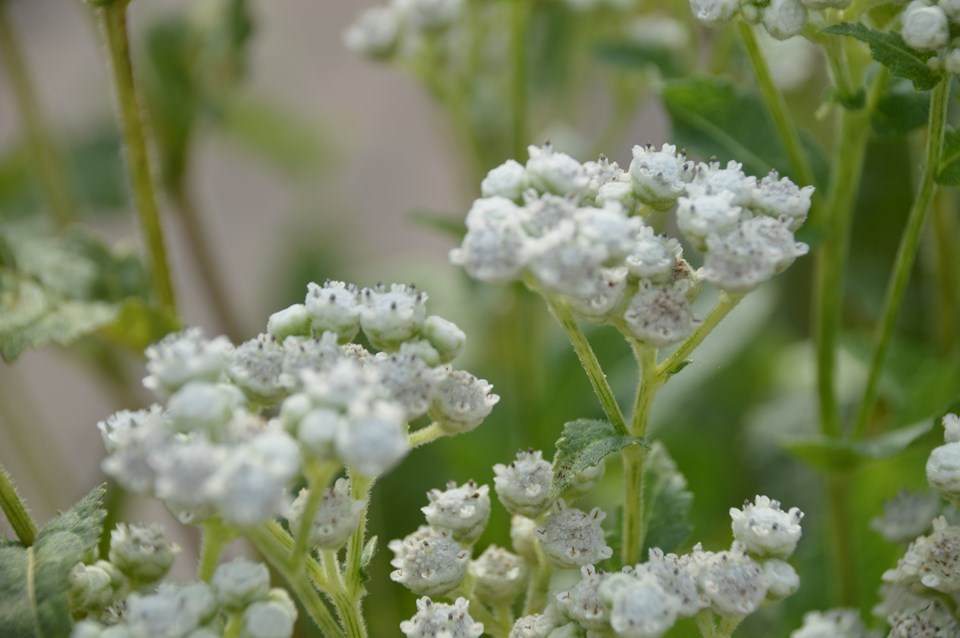Wild Quinine (Parthenium Integrifolium)
Wild Quinine
Parthenium integrifolium, commonly called American feverfew or wild quinine, is a clump-forming, Missouri native perennial which occurs in dry soils on prairies, glades and rocky woods. Grows 3-4′ tall. Woolly-looking, white flower heads, each with 5 tiny ray flowers (1/12″ long), appear in broad, flat-topped, terminal corymbs from late spring to late summer. Leaves are glandular and aromatic with a rough texture to both surfaces. The leaf margins are toothed and mostly entire, although some may exhibit coarse lobes at the base. Long-petioled basal leaves are much larger than cauline leaves (leaves on the stem).
The genus name Parthenium comes from the Greek meaning “virgin”, in reference to the fertile ray florets and infertile disk florets of species in this genus.
The specific epithet integrifolium means “with entire or uncut leaves”.

Easily grown in average, dry to medium, well-drained soil in full sun.
| Hardiness zone | 4 - 8 |
| Sun light | Full Sun |
| Water | Dry To Medium |
| Maintenance | Low |
No serious insect or disease problems.
Best in native plant, wild or cottage gardens or as part of a naturalized, meadow or prairie planting. Can be used in borders, but is minimally ornamental.
| Common name | Wild Quinine |
| Botanical name | Parthenium Integrifolium |
| Plant type | Herbaceous Perennial |
| Family | Asteraceae |
| Hardiness zone | 4 - 8 |
| Water | Dry To Medium |
| Maintenance | Low |
| Flower color | White |
| Flowering period | May - August |
| Height | 2 - 4 Ft. |
| Width | 1 - 2 Ft. |